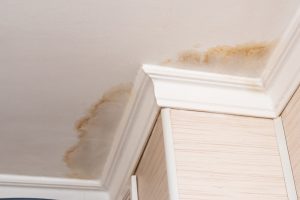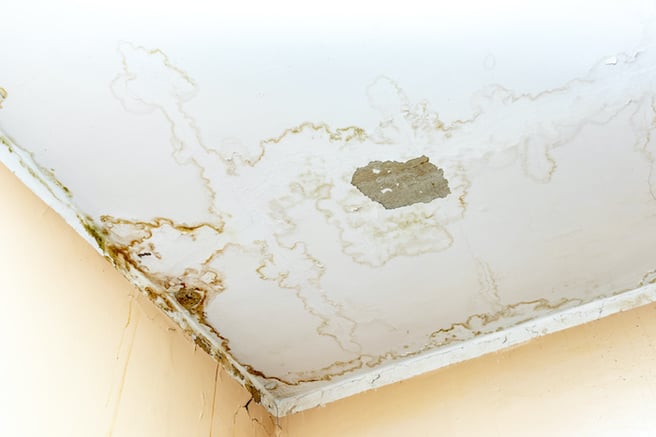The Causes of Water Deterioration in the Bathroom
The Causes of Water Deterioration in the Bathroom
Blog Article
Are you currently hunting for resources concerning How to Repair and Prevent Bathroom Water Damage??

Water damage commonly happens in the shower room as a result of the water used everyday. Occasionally, the damage could be a little mold from the shower. Other times, it's substantial damages on your floor. Whatever it is, it is always good to recognize the reason and also prevent it before it occurs.
This guide will certainly go through some of the common reasons for water damage in the shower room. We will also analyze what you can do to stop these reasons from harming your bathroom. Let's dive in.
5 Usual Sources Of Water Damage in Bathrooms
These are the common factors you would have water damage in your bathrooms and how you can find them:
Burst or Leaking Pipes
There are many pipes carrying water to various parts of your washroom. Some pipelines take water to the bathroom, the sink, the taps, the shower, and many various other areas. They crisscross the little area of the bathroom.
Every now and then, these pipes could obtain rusty and also burst. Other times, human activity could create them to leak. When this takes place, you'll discover water in the edges of your shower room or on the wall.
To identify this, watch out for gurgling walls, molds, or mildew. Call an expert emergency situation plumbing technician to repair this when it occurs.
Splits in your wall surface tilesv
Washroom wall surface floor tiles have been specially made for that function. They secure the wall surface from dampness from people taking showers. However, they are not undestroyable.
In some cases, your bathroom wall surface floor tiles fracture as well as enable some wetness to permeate right into the wall surface. This could possibly damage the wall surface if you do not take any action. If you observe a fracture on your wall tiles, repair it instantly. Do not wait till it ruins your wall.
Overruning bathrooms and sinks
As human beings, often we make mistakes that can trigger some water damage in the bathroom. For instance, leaving your sink faucet on could create overflowing and damage to other parts of the shower room with wetness.
Additionally, a damaged bathroom could trigger overruning. For instance, a busted toilet deal with or various other parts of the tank. When this happens, it might harm the flooring.
As quickly as you notice an overflowing sink or bathroom, call a plumber to help handle it quickly.
Roof Leaks
Sometimes, the problem of water damage to the restroom might not come from the bathroom. As an example, a roof leakage might trigger damage to the bathroom ceiling. You can detect the damages done by checking out the water discolorations on the ceiling.
If you find water discolorations on your ceiling, inspect the roof covering to see if it's damaged. After that, call a professional to assist solve the problem.
Excess Dampness
It's amazing to have that lengthy shower and sprinkle water while you hem and haw and act like you're executing, but in some cases these acts might trigger water damage to your washroom.
Splashing water around can trigger water to visit corners and create mold and mildews. View how you spread out excess wetness around, and also when you do it, clean it up to stop damages.
Conclusion
Water damage to your bathroom can be frustrating. Nonetheless, you can manage it if you stop a few of the causes discussed in this guide. Call a professional emergency situation plumber if you see any kind of serious damage.
How to Repair a Water-Damaged Wall in the Bathroom
All you need to know to repair bathroom wall water damage – from identifying the water source to finishing the repair professionally. If you don’t act quickly to resolve a water damage problem, you could find that it develops into a mold issue and/or cause structural damage to your home. Follow this guide to repair your bathroom before it's too late.
All you need to know to repair bathroom wall water damage
Water damage is a common household problem, and one that, if left unrepaired, can quickly lead to structural problems and health issues. The two most likely rooms where water damage may occur is the bathroom and the kitchen – where water is used often and there is high humidity.
What is water damage?
It is easy to think of water damage as caused by a flood or leaking tap or burst water pipe. However, when water damage is assessed, there are three main categories into which water falls (as classified by the American National Standards Institute). These categories are defined as:
Category 1 Water – ‘Clear Water’
This is sanitary water. There is usually no major threat to health by washing with this water, drinking it, or inhaling if it is streaming. Most water that enters your home will be category 1 water, while most water leaving your home will be either category 2 or 3 water. It may also come from melting snow, rainwater and water tanks.
Damage caused by this type of water can usually be repaired or restored, though this doesn’t mean that there are no potential health issues.
Category 2 Water – ‘Grey Water’
This is contaminated water – sometimes considerably so – and will cause illness if consumed or if it comes into contact with your skin. Water damage in this category is often caused by overflows from toilet bowls, and damage to washing machines and dishwashers. While damaged items might still be repaired or restored after damage by grey water, it is more difficult and more expensive to do so.
If the water damage in your home has been caused by grey water, it is advisable to have repairs made by professionals.
Over time, grey water will deteriorate and become black water.
Category 3 Water – ‘Black Water’
Category 3 water, also known as black water, is highly contaminated and a great risk to health. This may contain raw sewage, heavy metals, and other toxic substances. It will smell terrible.
If this is the water that has caused damage in your bathroom, do not touch it. Stop the water flowing if possible, seal the room and call the experts: it really isn’t worth the risk of ill health and disease that could be fatal. It is very unlikely that items can be repaired or restored if they have been damaged by black water.
https://www.porterscleaning.com/blog/how-to-repair-a-water-damaged-wall-in-the-bathroom/

How to Repair a Water-Damaged Wall in the Bathroom
All you need to know to repair bathroom wall water damage – from identifying the water source to finishing the repair professionally. If you don’t act quickly to resolve a water damage problem, you could find that it develops into a mold issue and/or cause structural damage to your home. Follow this guide to repair your bathroom before it's too late.
All you need to know to repair bathroom wall water damage
Water damage is a common household problem, and one that, if left unrepaired, can quickly lead to structural problems and health issues. The two most likely rooms where water damage may occur is the bathroom and the kitchen – where water is used often and there is high humidity.
What is water damage?
It is easy to think of water damage as caused by a flood or leaking tap or burst water pipe. However, when water damage is assessed, there are three main categories into which water falls (as classified by the American National Standards Institute). These categories are defined as:
Category 1 Water – ‘Clear Water’
This is sanitary water. There is usually no major threat to health by washing with this water, drinking it, or inhaling if it is streaming. Most water that enters your home will be category 1 water, while most water leaving your home will be either category 2 or 3 water. It may also come from melting snow, rainwater and water tanks.
Damage caused by this type of water can usually be repaired or restored, though this doesn’t mean that there are no potential health issues.
Category 2 Water – ‘Grey Water’
This is contaminated water – sometimes considerably so – and will cause illness if consumed or if it comes into contact with your skin. Water damage in this category is often caused by overflows from toilet bowls, and damage to washing machines and dishwashers. While damaged items might still be repaired or restored after damage by grey water, it is more difficult and more expensive to do so.
If the water damage in your home has been caused by grey water, it is advisable to have repairs made by professionals.
Over time, grey water will deteriorate and become black water.
Category 3 Water – ‘Black Water’
Category 3 water, also known as black water, is highly contaminated and a great risk to health. This may contain raw sewage, heavy metals, and other toxic substances. It will smell terrible.
If this is the water that has caused damage in your bathroom, do not touch it. Stop the water flowing if possible, seal the room and call the experts: it really isn’t worth the risk of ill health and disease that could be fatal. It is very unlikely that items can be repaired or restored if they have been damaged by black water.
https://www.porterscleaning.com/blog/how-to-repair-a-water-damaged-wall-in-the-bathroom/
Do you really like reading up on How to Repair and Prevent Bathroom Water Damage?? Try leaving a remark down the page. We'd be glad to see your thinking about this blog entry. We hope to see you back again before long. For those who appreciated our blog entry if you please remember to share it. I value reading our article about How to Repair and Prevent Bathroom Water Damage?.
Ready to help! Report this page